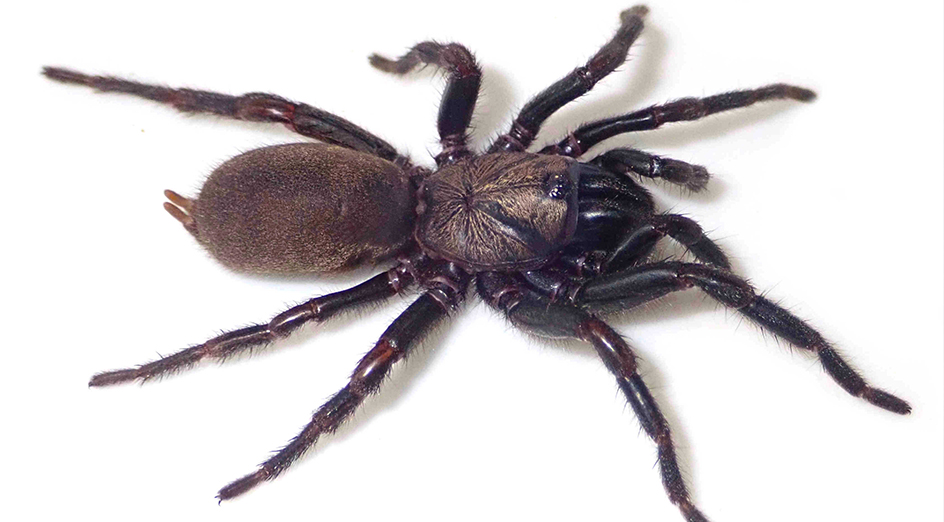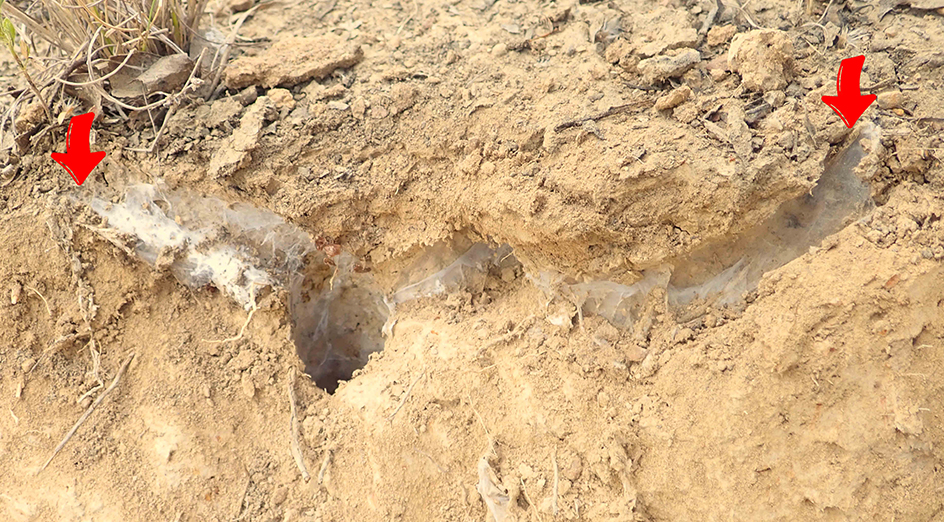A two-year study into Australian wishbone spiders that saw researchers travel thousands of kilometres across eastern Australia to collect specimens has resulted in the discovery of 55 new species, making the Aname genus one of the most diverse and widespread groups of arachnids in the country.
The groundbreaking research into these burrowing spiders, which are found throughout dry and tropical regions of Australia, was the result of a collaboration between The University of Western Australia and Queensland Museum and the Western Australian Museums, and was published in the European Journal of Taxonomy.
Lead author Dr Jeremy Wilson, participating as part of a postdoctoral fellowship funded by the Australian Biological Resources Study's National Taxonomy Research Grants Scheme, said the wishbone species were 'mygalomorph spiders', a group that also includes trapdoor spiders, tarantulas and funnel-webs.
"The genus Aname contains spider species that are often strikingly beautiful, with iridescent bronze, gold or silver hairs covering parts of their body," Dr Wilson said.
"They make silk-lined burrows in the ground that can be quite deep, and that often have a hidden secondary entrance that probably functions as an 'escape chute' to help them avoid predators and other threats."

Image: One of the new species Aname ferruginea (female). Pic: Dr Jeremy Wilson
Dr Wilson, who spent the first 12 months of the project based at Queensland Museum before moving to the Western Australian Museum and UWA, said the team made some amazing observations about the burrowing behaviour of the secretive spiders on two major field trips in Queensland.
"Then, in the lab, we were able to identify differences in their physical appearance and even in their DNA – using all of these lines of evidence to identify which species were new to science," he said.
"The 55 species include A. mulgana, found throughout the Mulga Lands of south-western Queensland, A. eddieorum, named after the Eddie family who run the ecological consulting company Boobook, and A. lawrenceae after project manager Melinda Lawrence who passionately supported the research project."
Queensland Museum principal scientist and curator of arachnology Dr Michael Rix, co-author of the paper, said the study brought together a wide range of scientific techniques, including detailed morphological analysis, live habitus observations, burrowing biology and molecular phylogenetics.

Image: Aname giraulti (a previously described species) burrow showing two entrances - giving the name 'wishbone spiders' due to the Y-shaped burrow cross section. Pic: Dr Jeremy Wilson
"By combining traditional morphological studies using museum collections, with cutting-edge molecular techniques and extensive field work, we were able to uncover the true extent of the diversity in this unique group of spiders," Dr Rix said.
"The description of 55 species which are new to science is a testament to the richness of Australia's arachnid fauna and underscores the importance of continued fieldwork and research in these often-overlooked regions."
Picture at top of page: (left to right) Dr Wilson in the field, burrow of one of the new species Aname occivillosa, and another of the new species Aname rubrochelicera (female) in a defensive posture.






